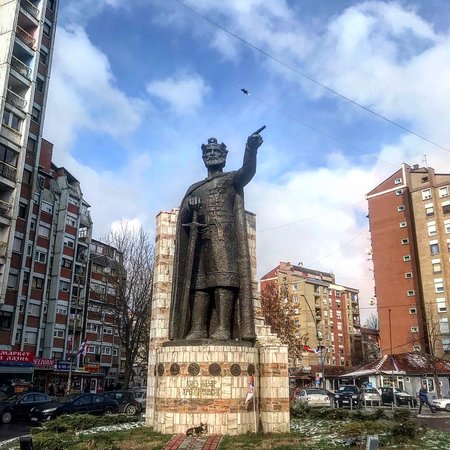Mitrovica, Kosovo: A City of Contrasts and Resilience

Introduction:
Mitrovica, situated in the northern part of Kosovo, is a city that encapsulates the complex history, cultural diversity, and resilience of the region. Divided by the Ibar River into a northern, predominantly Serbian, and a southern, predominantly Albanian, part, Mitrovica stands as a symbolic representation of the challenges and aspirations faced by the people of Kosovo. In this extensive guide, we embark on a journey through the streets of Mitrovica, exploring its historical significance, cultural tapestry, and the stories of resilience that define this unique city.
Chapter 1: Historical Context
1.1 Ancient Roots:
- Uncover the ancient roots of Mitrovica, dating back to Roman times when it was known as Naissus. Explore archaeological sites that attest to the city’s significance in the Roman Empire.
1.2 Ottoman Influence:
- Delve into Mitrovica’s Ottoman heritage, marked by the construction of mosques, bazaars, and bridges during the Ottoman era. Examine how these structures contribute to the city’s architectural and cultural identity.
1.3 Yugoslav Period:
- Navigate through Mitrovica’s history during the Yugoslav era, understanding its role in the complex political and social dynamics of the time. Explore how the city became a focal point for various communities.
Chapter 2: The Divided City
2.1 Ibar Bridge:
- Stand on the iconic Ibar Bridge, a symbolic divide between the northern and southern parts of Mitrovica. Understand the historical and political significance of this bridge and the challenges it poses in reconciling the city’s divided communities.
2.2 North Mitrovica:
- Explore the predominantly Serbian northern part of Mitrovica, with its distinct cultural and political context. Visit Serbian Orthodox churches, markets, and institutions that shape the identity of this community.
2.3 South Mitrovica:
- Immerse yourself in the predominantly Albanian southern part of Mitrovica, experiencing the vibrant culture and atmosphere. Visit Albanian-majority neighborhoods, mosques, and cultural centers that contribute to the southern part’s unique character.
Chapter 3: Architectural Landmarks
3.1 Imperial Mosque (Xhamia Mbret):
- Visit the Imperial Mosque, a prominent Ottoman-era mosque in Mitrovica’s southern part. Explore its architectural beauty and learn about its historical significance in the context of the city.
3.2 St. Dimitrius Orthodox Church:
- Explore St. Dimitrius Orthodox Church in Mitrovica’s northern part, witnessing the architectural splendor of this Serbian Orthodox church. Understand the cultural and religious importance it holds for the Serbian community.
3.3 Mitrovica City Museum:
- Engage with Mitrovica’s history at the City Museum, which provides insights into the city’s past, present, and the challenges faced by its diverse communities. Explore artifacts, documents, and exhibits that narrate the city’s story.
Chapter 4: Cultural Coexistence
4.1 Mitrovica Rock School:
- Discover the power of music in fostering cultural coexistence at the Mitrovica Rock School. Learn how young musicians from different communities come together to create a harmonious blend of sounds and bridge divides.
4.2 Mitrovica Youth Center:
- Explore the Mitrovica Youth Center, a hub for cultural exchange and dialogue between young people from various backgrounds. Understand the initiatives aimed at promoting understanding and collaboration among Mitrovica’s youth.
Chapter 5: Challenges and Resilience
5.1 Post-War Challenges:
- Delve into the challenges Mitrovica faced in the aftermath of the Kosovo War, including displacement, reconstruction, and the establishment of new political structures. Understand the impact of these challenges on the city’s communities.
5.2 Bridge-building Initiatives:
- Learn about initiatives and projects aimed at bridging the gap between Mitrovica’s communities. Explore grassroots efforts, international collaborations, and the role of civil society in fostering reconciliation and understanding.
Chapter 6: Practical Tips and Travel Information
6.1 Navigating Mitrovica:
- Navigate Mitrovica’s divided landscape with tips on crossing the Ibar Bridge, using public transportation, and respecting local customs. Learn about available resources for tourists and the best ways to engage with the community.
6.2 Cultural Sensitivity:
- Understand the importance of cultural sensitivity when visiting Mitrovica. Respect the diverse communities, be aware of historical sensitivities, and engage with locals in a thoughtful and considerate manner.
Conclusion: Mitrovica, A City of Hope and Harmony
Summarize the complex journey through Mitrovica, encapsulating its historical intricacies, cultural coexistence, and the resilience of its people. Inspire readers to approach the city with an open heart, acknowledging its challenges while appreciating the efforts towards reconciliation and understanding. Mitrovica, with its divided yet interconnected identity, invites travelers to witness the stories of hope and harmony that emerge from the heart of Kosovo.




